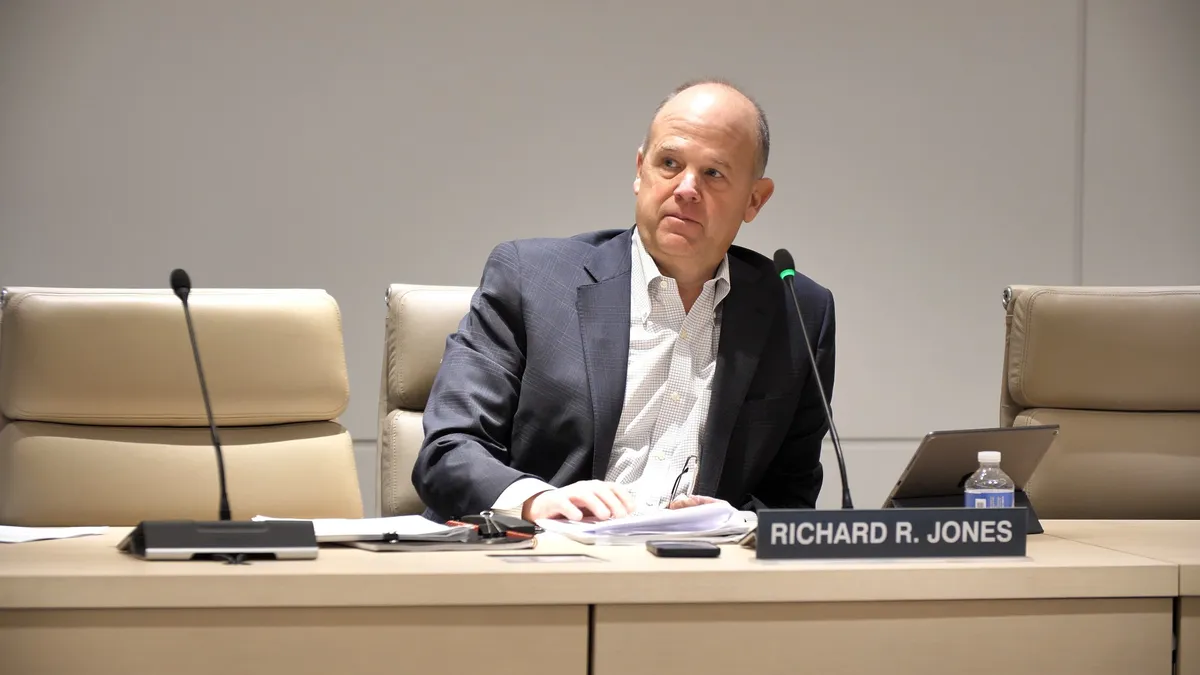CFOs blindsided this year by the Great Resignation of workers are responding with a Great Recalibration of wages.
Private sector hourly wages rose 4.8% in November compared with 12 months before, according to the Labor Department. CFOs will crack open company cash boxes even more in 2022, according to business surveys, with pay increases ranging from 3.9% (Conference Board), to 5% (Grant Thornton), to 5.2% (Deloitte).
The pandemic and supply chain disruptions take most of the short-term blame for driving inflation to a 39-year-high and increasing wage pressure. Over the long term, though, labor shortages will do more to push up compensation costs, according to economists and labor force experts.
The ratio of job vacancies to unemployed workers has hit a record high. The quits rate, or the number of workers who left their jobs as a percent of total employment, rose from 2.3% in January to 2.8% in October, the third-highest level in data going back to 2000, the Labor Department said this month.
“When we talk about real estate, we talk about buyer’s market or seller’s market — in the labor market, it’s a worker’s market, and that is very different from the environment we’ve seen for the past three decades,” according to Peter Henry, a professor of economics and finance at New York University’s Stern School of Business. “Wages are going to continue to rise rapidly.”
Many CFOs have never had to adjust to an economy in which labor has so rapidly gained leverage over wages, economists and labor force experts said.
When trying to attract and retain employees, CFOs walk a fine line. They need to calibrate an increase in compensation — usually a company’s biggest expense — without slowing profit growth.
“The more you pay, the better people you get and the lower the quit rates,” according to Gad Levanon, head of the Conference Board’s Labor Market Institute. “But the more you pay, the lower your profits.”
To set the most advantageous wages and win the “talent war,” CFOs can take five steps ranging from closely tracking wage and employment data, to expanding their definition of compensation, to ensuring that higher productivity underpins any pay increase, the economists and labor force experts said.

CFOs at Fortune 500 companies rank the challenge of attracting and retaining employees far above other internal risks for 2022, Deloitte found in a fourth quarter survey. “‘Retention, retention, retention’ was a resounding refrain, including through wages and incentives.”
CFOs plan next year to push up wages/salaries by nearly a full percentage point above their 4.3% forecast during the third quarter, according to Deloitte. At the same time, they estimate revenue and earnings next year will rise 7.8% and 9.6%, respectively, Deloitte said.
“We are seeing in many cases record earnings, record revenue numbers,” according to Steve Gallucci, managing partner for Deloitte’s CFO program.
A strike ending last month at Deere & Company underscored labor’s newfound negotiating clout along with the ability of CFOs at many companies to meet workers’ compensation demands.
After a walk-out lasting more than a month, 10,000 Deere employees affiliated with the United Auto Workers approved a new contract that includes an immediate 10% raise, a $8,500 restart bonus and, through 2026, two 5% raises and two big bonuses.
Even after its concessions to labor, Deere expects to increase net income during the fiscal year ending Oct. 31, 2022, by as much as 17%.
By taking five steps, CFOs can ensure compensation hits the sweet spot of sustaining profit growth while attracting and retaining talented employees, the economists and labor force experts said. They should consider:
1. Tracking data on wage trends
A CFO can confidently fine-tune compensation by carefully monitoring shifts in wages, the economists and labor force experts said.
The Employment Cost Index, released quarterly by the Bureau of Labor Statistics, highlights growth in total compensation — including wages and benefits — across hundreds of occupations and industries. The September report showed that during the prior 12 months compensation rose 3% for construction workers and 6.9% for employees at leisure and hospitality companies.
The Federal Reserve Bank of Atlanta every month updates its Wage Growth Tracker showing median hourly wage growth on a 12-month basis, using a three-month moving average to reduce volatility and remove distortions. Median wages rose 4.3% in November compared with 12 months before, the biggest gain since 2007.
The quits rate has surged in 2021, hitting a record high of 3% in September before easing to 2.8% the following month. “Wage growth and quit rates and labor shortages in general are more noticeable in blue collar and manual service jobs,” Levanon said in an interview.
While monitoring current wages, CFOs should also make sure to track leading indicators of pay levels, the economists and labor force experts said.
Usually the unemployment rate is useful for such forecasting, with declining joblessness signaling rising wage pressure, Levanon said. Pandemic lockdowns have blurred the correlation somewhat, with the labor market tightening and wages increasing even as unemployment remained elevated.
The National Federation of Independent Business each month reports on the percentage of small companies that plan to increase compensation during the coming three months. In November, 32% of companies said they would increase wages and benefits in the next 90 days, unchanged from October and the highest percentage in 48 years.
Inflation acts as both a leading and lagging indicator for wage trends. Price gains can signal rising pressure for higher wages, as workers demand more pay to keep up. Inflation can also follow wage gains as companies increase prices to blunt the increasing cost of expenditures such as labor, Levanon said.
2. Expanding scenario planning
Since the onset of COVID-19 and a sharp, pandemic-induced recession, CFOs have confronted the greatest range and severity of risks in decades. While considering wage increases, they need to track threats to growth from extreme weather, the omicron variant, persistent supply chain bottlenecks and mounting tensions with China and Russia, to name a few.
CFOs cannot count on Washington to backstop the economy and financial markets as much as it did soon after the coronavirus emerged. Congress has so far thwarted plans by the Biden administration to further stimulate growth by spending roughly $2 trillion on healthcare, education, climate change and other social welfare.
Meanwhile, the Federal Reserve, having underestimated the flare-up in prices, accelerated its withdrawal of stimulus this month to combat a 6.8% surge in the consumer price index.
CFOs need to be ready for a wide array of outcomes, according to Darryl Baker, CFO at Redirect Health, a manager of employee healthcare.
“Scenario planning is a big deal to me,” he said in an interview. “Businesses that are stuck in the old thinking of annual planning cycles, locking in an annual budget and saying, ‘I’ve defined this as my budget for 2022’ — they’re going to miss the mark.”
CFOs entering 2022 need to build into their scenario planning rising costs for labor and other expenditures, Baker said. “We’ve got to figure out how to adjust our pricing to counterbalance the cost, but without creating this insane inflationary spiral that just gets completely out of control.”
3. Expanding geographical staffing range
Even before the omicron variant affirmed the value of remote work, 88% of Fortune 500 CFOs said early last month they will apply a hybrid work model in 2022, Deloitte found in its survey.
The next step for a CFO eager to trim labor costs is to work with human resources staff to reach beyond a company’s usual area for employment into regions with lower average salaries, the economists and labor force experts said.
“Companies that operate in expensive labor markets can shift some of the payroll to cheaper areas,” Levanon said.
The gambit can backfire when CFOs engage in “paycheck arbitrage” and cut the compensation of employees who move from high- to low-cost areas. Meta Platforms CEO Mark Zuckerberg stirred controversy in May 2020 when he approved remote work and a permanently distributed workforce but adjusted pay based on location.
4. Validating higher wages
Since January 2020, the shift to remote work, online shopping and other changes from the pandemic have pushed up gains in annual productivity to 3.5% from 1.5% during the 2005-2019 period, according to the San Francisco Fed.
CFOs can more confidently approve wage increases that do not exceed productivity gains, Henry said. Facing intense wage pressures, they should refine their measurement for output per hour, whether in services or manufacturing.
“The key thing for executives is to think very hard and very systematically about measuring productivity,” he said during a Protiviti webcast. “Wage increases don’t have to erode your profitability if they’re accompanied by productivity increases.”
Gauging employee output “may be in theory a good idea, but how do you measure productivity of office workers?” Levanon said. “For many types of jobs, it would be very imprecise and may cause bigger problems than it would solve.”
Technology can boost productivity and validate an increase in wages. Ninety-two percent of Fortune 500 CFOs plan to reduce labor costs in 2022 by increasing their use of automation, Deloitte said.
5. Broadening ‘compensation’ definition
CFOs should not expect a generous bonus or other one-shot benefits to stem staff departures, the economists and labor force experts said.
“Labor is so fungible that when you throw someone a one-time payment, a bonus, that doesn’t necessarily lock them in,” Baker said. “You should look at something that’s more sticky, like a health benefit.”
Companies should take several steps to improve the “employee experience,” including offering flexible or hybrid work arrangements, launching learning and development programs, providing top quality technology as standard issue and ensuring a “well-being atmosphere,” Protiviti Managing Director Fran Maxwell said.
“Organizations that will win the talent war will focus on differentiating an employee experience, making it different for each employee,” he said.
Offering employees a buffet of benefits can cost less than the expense of hiring and training employees to fill vacated spots, the economists and labor force experts said.
CFOs should determine which programs most appeal to each of their company’s demographic segments, Catherine Hartmann, North America rewards practice leader at Willis Towers Watson, said in an interview. They should ask “which are the programs we are delivering that have the highest ROI [return on investment] for specific groups of employees.”
Without such due diligence, CFOs may launch benefits that underwhelm staff, Hartmann said. She described a company that started a generous pension plan which gained limited appeal beyond employees who planned to retire within five years.
Balancing expectations
Facing labor shortages and overheating prices, many CFOs struggle to balance company needs with staff expectations for higher pay and a flexible approach to work, the economists and labor force experts said.
“If I’m an employee, I’m saying, ‘Okay, what raise did I get last year and, oh, by the way, the things I’m buying – gas, food – have all gone up in excess of 5%,” according to Robert Licht, CFO at Hertz Investment Group, a real estate firm with $2.5 billion in properties in 25 U.S. cities. “We’re trying to balance those expectations.”
“Another struggle is to make everyone realize the benefits of being in the office,” Licht said. “I can’t in my wildest dreams imagine underwriting a new real estate acquisition where everyone is in a different location.”
Given current challenges, open dialogue with employees is essential, he said. “You need to create an environment where they feel comfortable being candid.”
CFOs may end up raising wages more than 4% in 2022 after they “realize the full impact of wage growth and inflation, and also see what other companies are doing,” Levanon said.
Compensation budgets may need to rise at a rapid rate for many years, he said, noting that the pool of U.S. workers aged 15 to 64 has shrunk since early 2020. “The working age population is not growing anymore.”




















